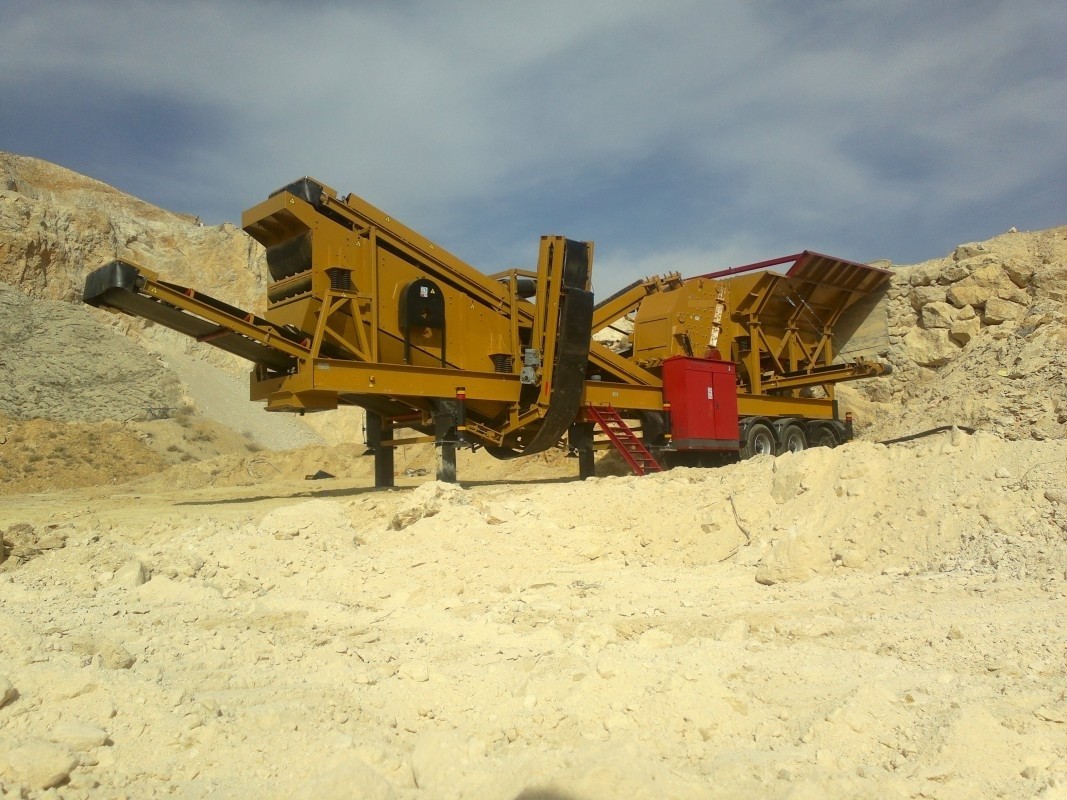A mobile primary crusher is a high-capacity, mobile crushing system designed to perform the initial stage of material reduction at construction sites, quarries, and mining operations. These machines are engineered to process large boulders and hard materials directly at the source, minimizing the need for hauling and increasing operational efficiency.
Structural Components:
-
Feeding Unit:
-
Equipped with heavy-duty vibrating feeders.
-
Large feed hopper (20 to 50 m³ capacity).
-
Capable of direct truck or loader feeding.
-
-
Primary Crusher:
-
Typically equipped with jaw crushers or primary impact crushers.
-
Handles materials up to 1500 mm in diameter.
-
Operates at low speed with high torque to crush very hard materials.
-
Resistant to abrasion and heavy shock loads.
-
-
Main Chassis & Mobility:
-
Available in wheeled or tracked versions.
-
Robust design for off-road durability.
-
Hydraulic jacks for fast leveling and setup.
-
-
Conveyor Systems:
-
Discharge conveyors deliver crushed material to stockpiles or secondary crushers.
-
Can be folding, telescopic, or fixed.
-
-
Control System:
-
PLC-based automation for remote monitoring and control.
-
Allows fine adjustments of crusher speed, feed rate, and output size.
-
Advantages:
-
High throughput capacity (200 – 1000 TPH)
-
On-site crushing reduces transportation costs.
-
Eliminates the need for stationary crushing plants.
-
Quick setup (typically within one working day).
-
Flexibility in changing job sites.
-
Suitable for a wide range of materials (basalt, granite, limestone, etc.)
Application Areas:
-
Primary crushing at quarry sites
-
Mining operations and ore preparation
-
Railway ballast production
-
Road base and infrastructure materials
-
Pre-crushing for mineral enrichment
 English
English
 Le français
Le français
 Türkçe
Türkçe

